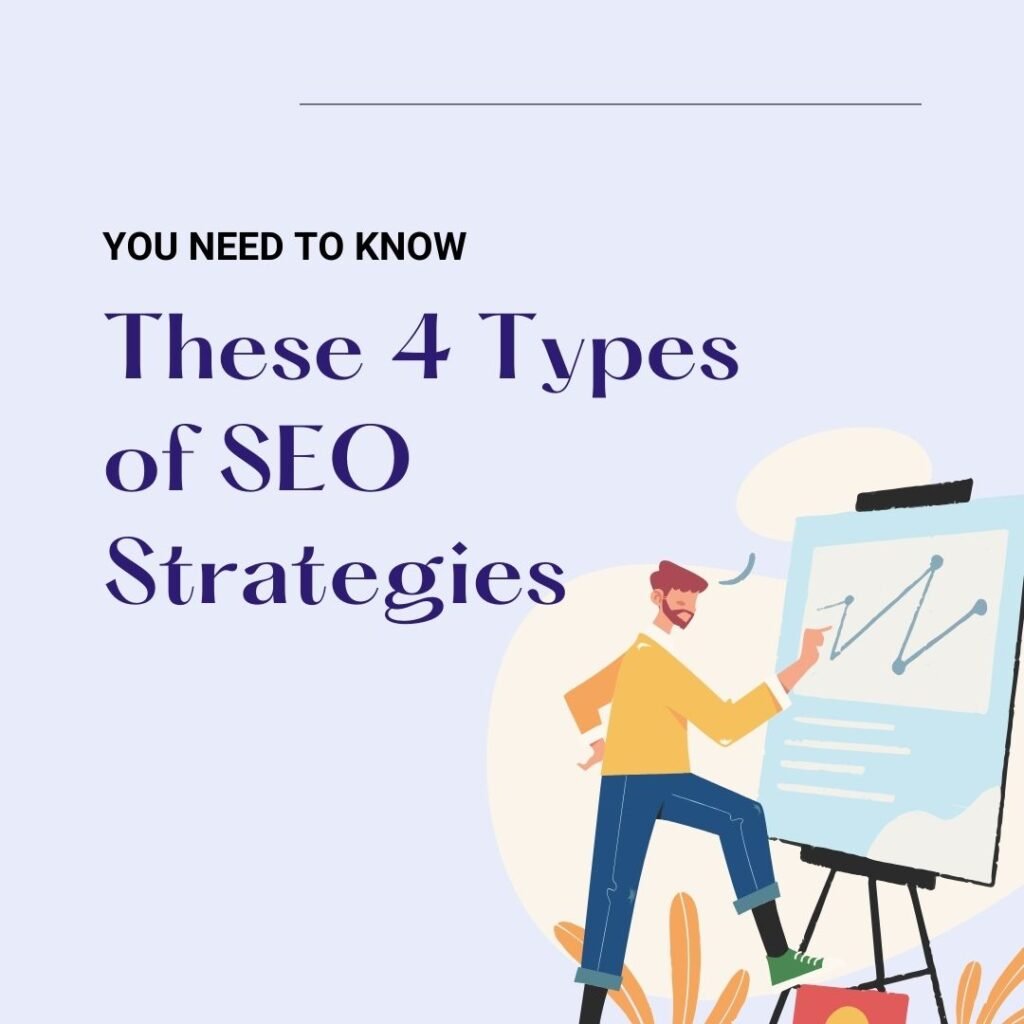Search Engine Optimization (SEO) is the backbone of digital marketing, helping businesses rank higher on Google and attract more organic traffic. But SEO isn’t just one thing—it’s a mix of strategies working together.
So, what are the 4 types of SEO? The main categories are:
- On-Page SEO
- Off-page SEO
- Technical SEO
- Local SEO
Each type plays a unique role in improving your website’s visibility. In this guide, we’ll break them down with real-world examples, expert insights, and actionable tips to help you dominate search rankings.
1. On-Page SEO: Optimizing Your Content for Search Engines
On-page SEO refers to optimizing elements directly on your website to improve rankings. This includes content, HTML tags, and internal linking.
Key On-Page SEO Factors
Keyword Optimization – Using relevant keywords naturally in your content.
Title Tags & Meta Descriptions – Crafting compelling click-worthy titles.
Header Tags (H1, H2, H3) – Structuring content for readability.
Internal Linking – Connecting related pages to boost authority.
Image Optimization – Using alt text and compressing images.
Real-Life Example: How Backlinko Dominates with On-Page SEO
Brian Dean’s Backlinko is a masterclass in on-page SEO. His guides use:
- Long-tail keywords (e.g., “how to build backlinks in 2024”)
- Scannable headers (H2s, H3s, bullet points)
- Internal links to related posts
This approach helps his content rank #1 for competitive terms.
Pro Tip:
Use tools like Ahrefs or SEMrush to analyze top-ranking pages and model their on-page structure.
2. Off-Page SEO: Building Authority Beyond Your Website
Off-page SEO focuses on external signals that boost your site’s credibility, primarily backlinks.
Key Off-Page SEO Factors
Backlinks – High-quality links from authoritative sites.
Social Signals – Shares on social media (indirect ranking factor).
Brand Mentions – Unlinked references that can turn into links.
Case Study: How HubSpot Earns 200K+ Backlinks
HubSpot’s free tools and templates attract natural backlinks. For example:
- Their “Blog Post Template” is linked by 5,000+ sites.
- Guest posts on Forbes and Entrepreneur build authority.
Pro Tip:
Use broken link building (finding dead links and suggesting your content as a replacement) to earn easy backlinks.
3. Technical SEO: The Backbone of Website Performance
Technical SEO ensures search engines can crawl and index your site efficiently. Ignoring this can hurt rankings, even with great content.
Key Technical SEO Factors
Page Speed – Google prioritizes fast-loading sites (use Google PageSpeed Insights).
Mobile-Friendliness – Over 60% of searches come from mobile (test with Mobile-Friendly Test).
Structured Data (Schema Markup) – Helps Google understand your content better.
Fix Crawl Errors – Broken links (404s) hurt rankings (check via Google Search Console).
Example: How The New York Times Improved Load Time by 50%
By compressing images, enabling caching, and using a CDN, NYT reduced bounce rates and boosted rankings.
Pro Tip:
Use Screaming Frog to audit technical issues like duplicate meta tags or redirect chains.
4. Local SEO: Dominating Google Maps & “Near Me” Searches
Local SEO helps businesses rank in location-based searches. If you have a physical store, this is crucial.
Key Local SEO Factors
Google Business Profile (GBP) Optimization – Complete your profile with photos, hours, and reviews.
Local Citations – Consistent NAP (Name, Address, Phone) across directories.
Customer Reviews – Positive reviews boost local rankings.
Case Study: How a Small Bakery Ranked #1 in Local Searches
“Sweet Delights Bakery” optimized their GBP, got 100+ reviews, and used local keywords (e.g., “best cupcakes in Austin”). Within 3 months, they topped local searches.
Pro Tip:
Encourage happy customers to leave reviews via SMS or email follow-ups.
Which Type of SEO is Most Important?
All four types work together:
- On-page SEO = Quality content
- Off-page SEO = Trust signals
- Technical SEO = Site health
- Local SEO = Geographic visibility
Neglecting one can limit your success.
Final Thoughts: Mastering the 4 Types of SEO
SEO isn’t just about keywords—it’s a mix of content, links, technical health, and local presence. By balancing all four, you’ll:
✔ Rank higher on Google
✔ Drive more organic traffic
✔ Convert more visitors into customers
Need help with SEO? Book a free audit with our team today!
FAQ: Common Questions About the 4 Types of SEO
Q: Which SEO type is easiest to implement?
A: On-page SEO (optimizing content) is the most beginner-friendly.
Q: How long does SEO take to work?
A: Typically 3-6 months, but technical fixes can show faster results.
Q: Can I do SEO myself?
A: Yes! Start with on-page and local SEO, then scale up.


